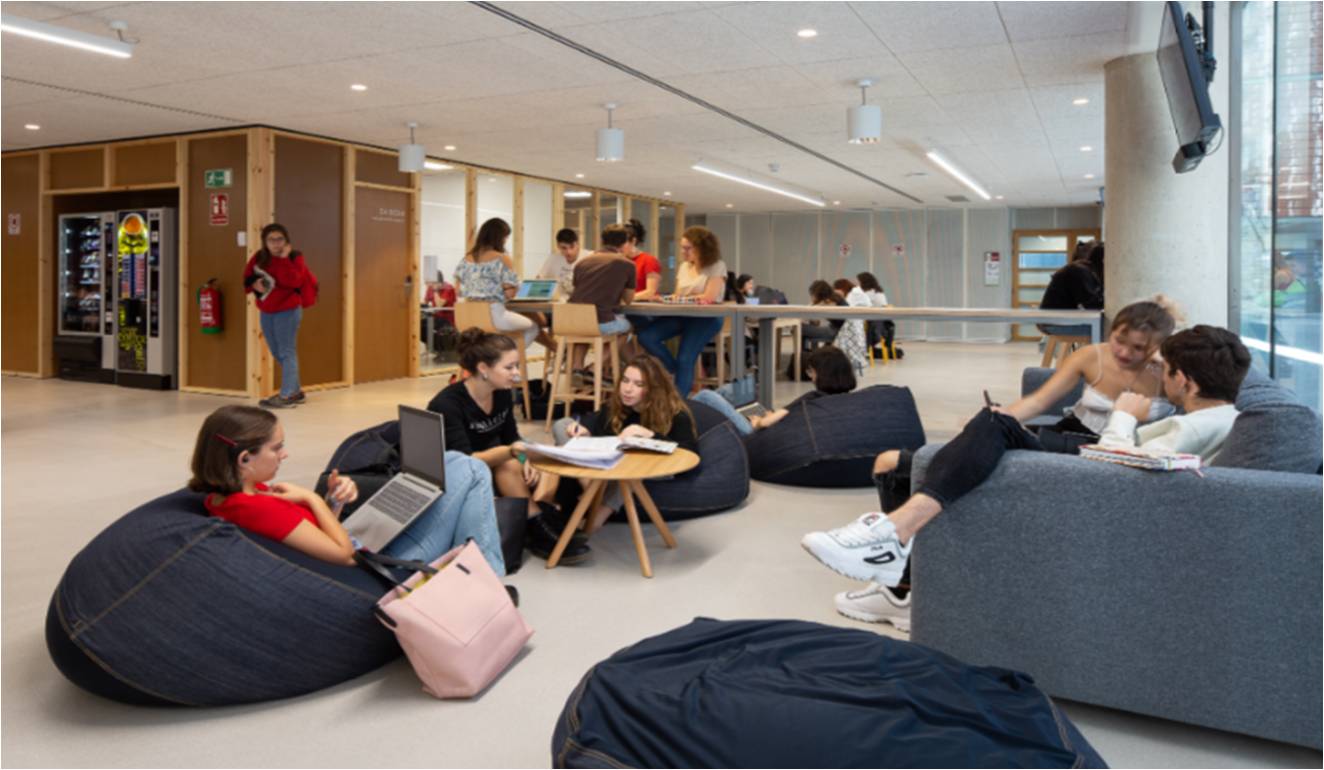Hybrid learning spaces promoting effective education
Patricia Santos, a member of the Research Group on Interactive and Distributed Technologies for Education at the UPF Department of Information and Communication Technologies (DTIC) has co-authored a pair of papers published in the advanced online edition of the British Journal of Education Technology on Hybrid learning spaces: design, data, didactics.

Education systems are beginning to recognize the potential of hybrid learning spaces in promoting effective education and they increasingly use educational models based on this new methodology. Hybridization means multidimensionality: it is the intercalation of formal and informal social structures of learning, the combination of physical and digital tools that are involved in the interaction of the individual with the world, society and more.
Recent studies have begun to explore the nature of hybridization from an education design standpoint. Patricia Santos, a member of the Research Group on Interactive and Distributed Technologies for Education (TIDE) at the UPF Department of Information and Communication Technologies (DTIC), has co-authored a pair of papers published in the advanced online edition of the British Journal of Education Technology on hybrid learning spaces.
The work helps to show educational design research within a zone of possibility, or ZoP. “We define a ZoP as a place where individuals can overcome the constraints of expectations and power structures to effect desired change”, Santos explains.
The role of education design is studied in highly technical social environments and in hybrid learning spaces to be able to determine how to achieve successful communication in a zone of possibility, or ZOP
This article stems from research conducted in educational design during the past seven years and is a contribution to the special issue on: Hybrid learning spaces: design, data, didactics in the British Journal of Education Technology. Following a review of the literature, the authors study the role of education design in highly technical social environments and in hybrid learning spaces to be able to determine how to achieve successful communication in a zone of possibility, or ZOP, open to change.
The paper is structured around three case studies: the Confer educational project; ZoP Stokes Croft, urban regeneration in “hybrid cities” directed by citizens; and Google Lens for Higher Education, with which they formulate preliminary conclusions and new areas for future study.
The spaces in which we teach and learn are changing. Technology is permeating the physical spaces, increasing and improving learning experiences
According to the results of the study, in the case of the Confer education project, this became too complex and users who had helped co-design it could not find enough time to evaluate it. Regarding the ZoP Stokes Croft, the authors conclude that users filmed and posted videos and annotated them, but did not use the discourse tools, perhaps because they considered such an unnecessary overhead.
As for Google Lens in Higher Education, in this case the authors did find potential to intervene in hybrid learning within a ZoP. However, there are many ethical and privacy concerns related to the growing dominance of Google, Facebook, etc. as well as a feeling of apprehension regarding the artificial intelligence that underpins such tools.
One of the main conclusions reached by the authors is that “bridging an understanding of social context should include an undertaking to develop mediational tools that address ethical and privacy concerns of citizens but that also sit easily in users’ learning, cultural and work practices”.
In this special issue of the journal BJET, Patricia Santos co-authors a review article that progresses in line of promoting successful communication in the context of hybrid learning. Specifically, she focuses on understanding how learning design and learning analytics are applied in mobile and ubiquitous learning contexts. The authors conduct a review of the literature to identify common elements between the two communities and complementary research contributions, as well as new opportunities for research. Thus, the research proposes aligning more systematically the processes of learning design and learning analytics.
As the editorial of this special issue of the BJET states: ”The spaces in which we teach and learn are changing. Technology is permeating the physical spaces, increasing and improving learning experiences. At the same time, Internet-connected mobile technology (IoT) creates interfaces between virtual spaces and real-world phenomena, and creates a “data trail” of our actions in the physical world”.
Related works:
John Cook, Yishay Mor, Patricia Santos (2020), "Three cases of hybridity in learning spaces: Towards a design for a Zone of Possibility", British Journal of Education Technology, edició avançada en línia, https://doi.org/10.1111/bjet.12945
Gerti Pishtari, Maria J. Rodríguez-Triana, Edna M. Sarmiento-Márquez, Mar Pérez-Sanagustín, Adolfo Ruiz-Calleja, Patricia Santos, Luis P. Prieto, Sergio Serrano-Iglesias, Terje Väljataga (2020), "Learning design and learning analytics in mobile and ubiquitous learning: A systematic review", edició avançada en línia, 22 d'abril, BJET, https://doi.org/10.1111/bjet.12944
